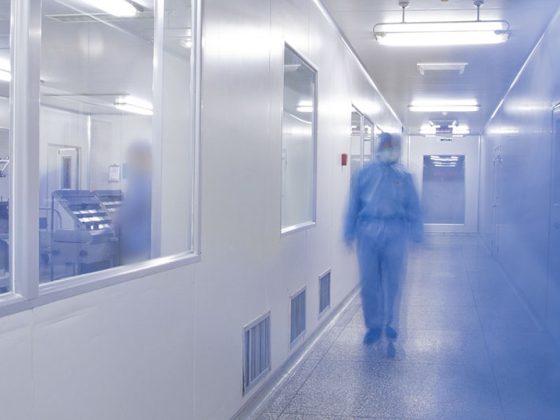The lethality to drug reactions is 10%. Drug allergies and anaphylaxis thus form a complex of topics that must be dealt with urgently in clinics and practices, as the consequences can sometimes take on dramatic features.
DRESS in 6-year-old
The combination of a DRESS (Drug reaction with Eosinophilia and systemic symptoms) and a PASI III, i.e., more than 2 glandular autoimmune diseases occurring with genetic predisposition, provided a dramatic course in a 6-year-old [1].
The child with bone fracture and osteomyelitis received sulfamethoxazole/trimetoprim and subsequently developed DRESS. The boy had defective Tregs and was HHV-6 associated. For the pediatricians, Kawasaki syndrome was also in the differential diagnostic consideration, which resulted in a massive start with prednisolone and early administration of intravenous immunoglobulins (IVIG) in the treatment.
The administration of the sulfamethoxazole/trimetoprim due to the osteomyelitis initially responded quite well and it healed. However, the pediatricians then got into a discussion about whether it was really DRESS or whether intravenous immunoglobulins and high-dose steroids should be used. In the end, very intensive treatment was continued – with severe consequences: A diabetic ketoacidosis developed, after 4 months a Hashimoto thyroiditis, after 7 months alopecia, after 21 months vitiligo, the boy got choroidal lesions, so that one even spoke of a Vogt-Koyanagy-Harada disease.
“All in all, a quite dramatic course, and this is not an isolated case: there are 5 other cases described in which one started therapy quite intensively after DRESS and subsequent autoimmune disease with differential diagnosis to Kawasaki syndrome,” Prof. Bayerl explained. Their conclusion: In such cases, autoantibodies should be measured early, diabetes should be checked, thyroid autoantibodies should be screened, because obviously this massive immunosuppression occurring in early childhood opens the door for immunological reactions. Possibly, in her estimation, the therapy could have been less aggressive – but afterwards one is always wiser.
Intraoperative anaphylaxis
A 71-year-old patient with COPD and atrial septal defect needed a hemostyptic (porcine gelatin-based) during surgery, which is given on surgical sutures. After a few minutes, the man began to have an anaphylactic reaction.
The allergological history revealed that the patient was bitten by a tick at the age of 8 years and subsequently sensitized to α-gal [2]. α-Gal is a carbohydrate in tick saliva and is found in red meat of most mammals. For the duration of about 10 years, the patient had also developed an allergy to meat, which eventually disappeared. But now, at the age of 71, a reaction to gelatin via his old α-gal sensitization has occurred again, which was also detectable via the antibodies in the serum.
“Before bleeding surgery, we should take a detailed medical history and ask about tolerance to meat and gumdrops,” was the conclusion for Prof. Bayerl.
Caution: Vaccines against measles, mumps, rubella may also contain gelatin.
Anaphylaxis during anesthesia
A young patient, 17 years, atopic, was prepared for laparoscopic varicocelectomy during ITN. “Colleagues like to take the patent blue for this so they can show the trajectories more clearly,” Prof. Bayerl explained.
50 minutes after the administration of 2 ml patent blue V intrascrotal, the young man developed a decent erythema and urticaria. He was treated with antihistamines and corticosteroids [3]. “But then, after about 2 hours, the whole thing really kicked in – itching, shortness of breath, epinephrine, oxygen, antihistamines again, the whole nine yards. A typical biphasic reaction!”
Skin testing for patent blue V was performed in stages, first prick undiluted with negative result, then intracutaneously 1:100 also negative and finally i.c. 1:10 with positive result, i.e. a wheal reaction with surrounding erythema.
Conclusion: Patent blue V (E131) is a trigger for anaphylaxis. Important to know: It is also used as a food additive and in textile dyes and medical products (laxatives). For surgical use, e.g., in varicocelectomy, methylene blue could just as well be used as an alternative, the expert advised.
Cave: Biphasic anaphylactic reactions are found in 5% of all anaphylaxis.
Anaphylaxis in pregnancy
An unusual casuistry especially because skin testing is generally avoided during pregnancy. Due to blood pressure drop in the mother, intrapartum asphyxia of the child and hypoxic brain damage, anaphylaxis is very undesirable in pregnancy. Prof. Bayerl was also unable to understand why this was done in this South Korean case study and was unable to find a plausible explanation in the literature [4].
A 34-year-old multigravida, scheduled for sectio at 37 weeks’ gestation, was tested for cefotetan (2nd generation cephalosporin i.v./i.m.). The woman had already tolerated it well several times and had no history of drug allergy. When tested with 1:100 on the forearm, she now reacted: Within seconds, urticaria and dyspnea developed, she had to vomit, bradycardia occurred in the child.
The doctors gave oxygen, antihistamines, and hydrocortisone, but no epinephrine (because of the care of the baby in utero). Emergency sectio occurred in ITN, the child recovered in the further course, however, the mother was in the intensive care unit for a longer time with a more dramatic course.
CONCLUSION: The incidence of cefotetan anaphylaxis is 1.4% with prophylactic administration during cesarean section. It remains unclear why the skin test occurred. Epinephrine may induce uterine vasoconstriction. Anaphylaxis after i.v. antibiotics in pregnancy has been described, but not with skin testing. Controversy surrounds the timing and method of induction of labor after anaphylaxis or the decision to proceed initially pro-maternal (then epinephrine administration after all) or pro-infant.
Anaphylaxis after oral sex
Finally, a case report true to the motto sex sells: A 31-year-old female patient comes to the intensive care unit with an anaphylactic reaction – dyspnea, urticaria and vomitus. History of penicillin allergy in childhood. 4 hours before the anaphylaxis, the woman had oral sex with her partner – who was taking amoxicillin because of an ear infection.
“We learn from this: Amoxicillin can get into the sperm. When taking medication to which the partner is allergic, the use of a condom is therefore recommended,” Prof. Bayerl concludes. Sperm allergy was not present in this case.
Source: Allergo-Update Berlin (D)
Literature:
- Morita C, et al: BMJ Case rep 2018; doi: 10.1136.
- Lied GA, et al: J Asthma Allergy 2019; 12: 163-167.
- Leung M, et al: BMJ Cas Rep 2019; 12: e226191.
- Jeon HJ, et al: Medicine 2018; 97: 37.
- Gomez Caballero N, et al: BMJ Case reports 2019; 12: e227398.
InFo PNEUMOLOGY & ALLERGOLOGY 2(1): 26











